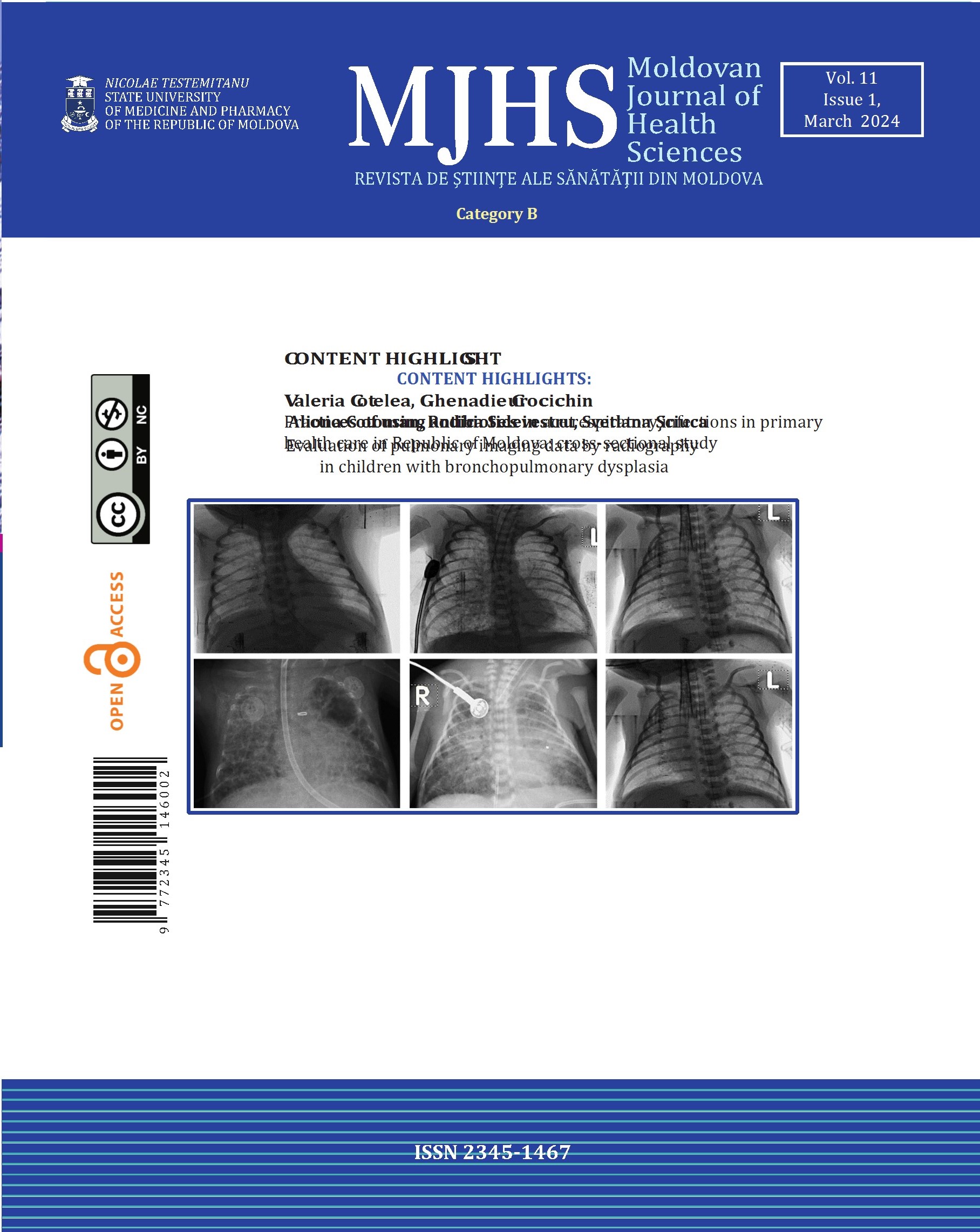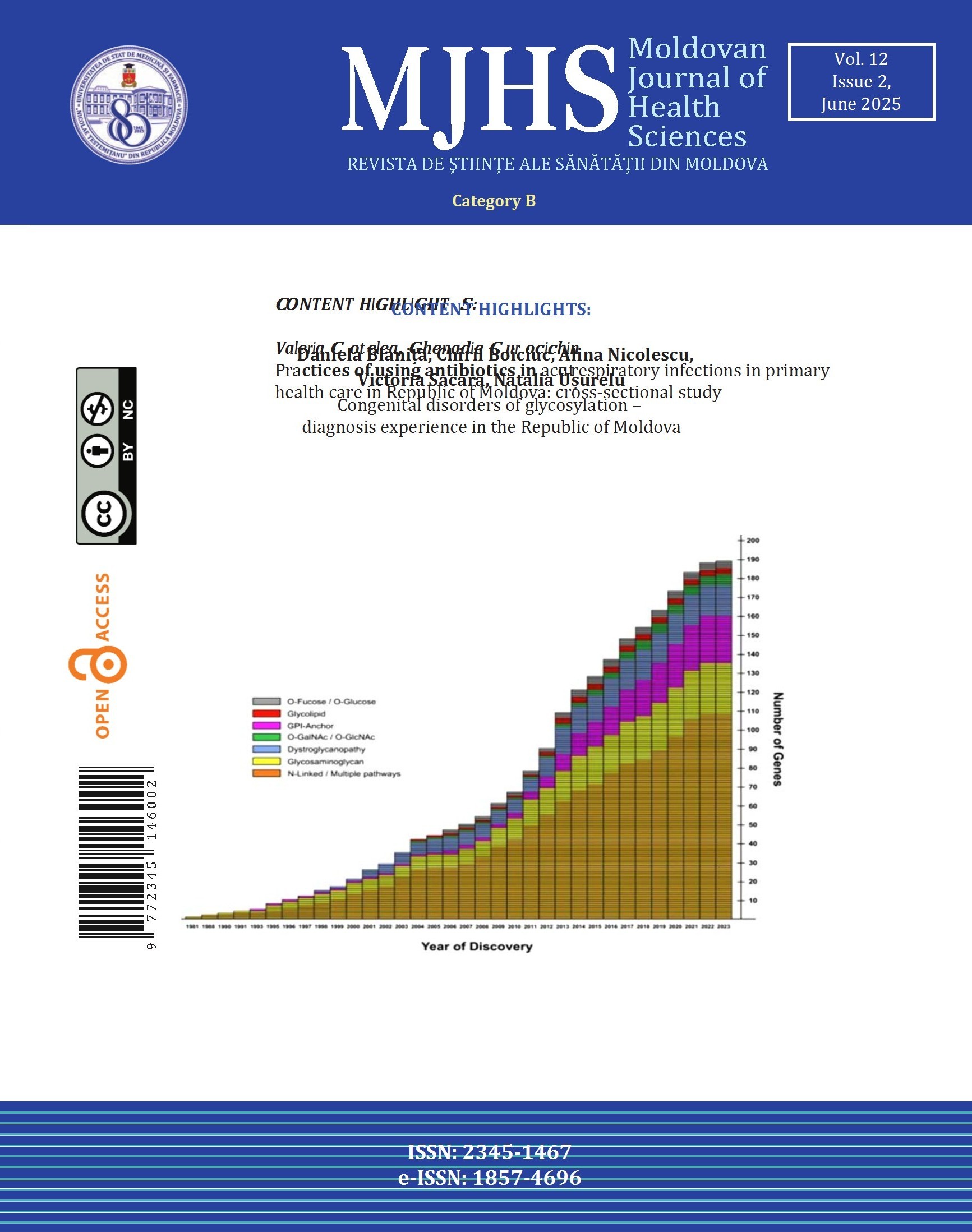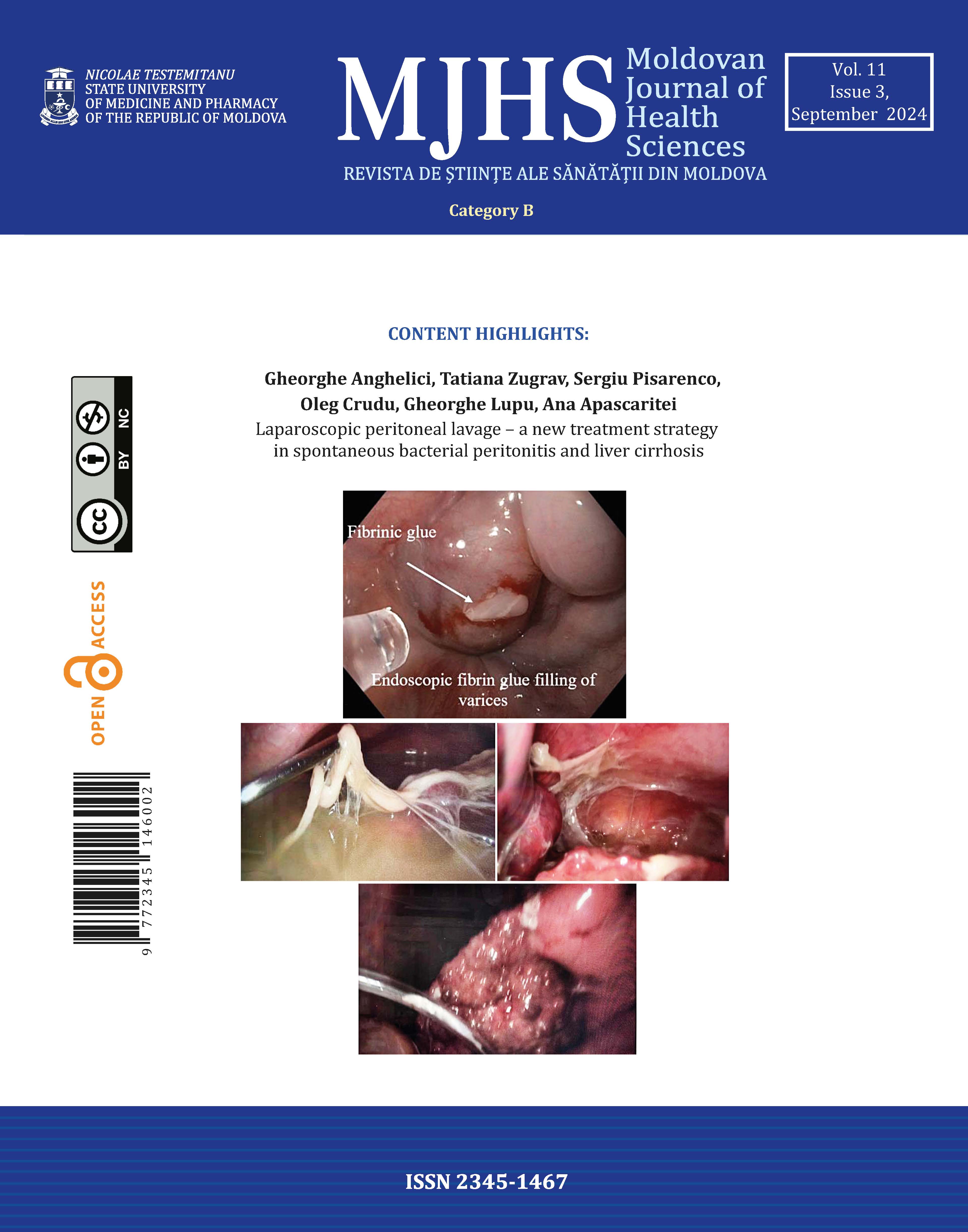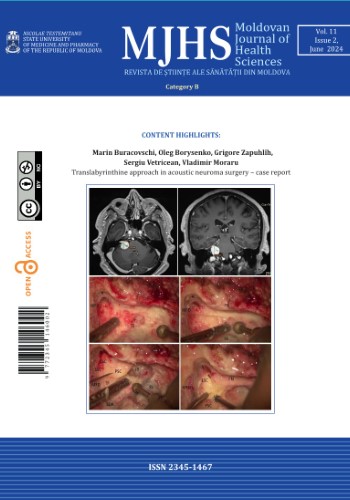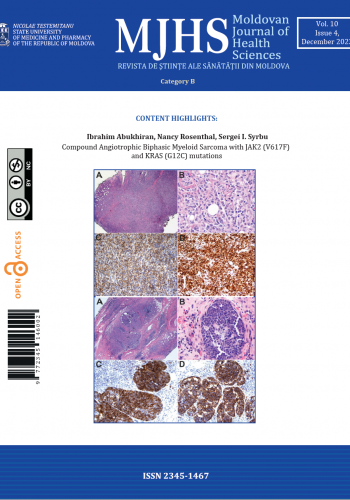Parameters predicting non-invasive ventilation failure in COVID-19 patients
https://doi.org/10.52645/MJHS.2024.1.01
Introduction
During COVID-19 pandemic, non-invasive ventilation (NIV) was widely used during COVID-19 Pandemic. The factors predicting NIV failure in COVID-19 patients remain debatable. The goal of this research is to identify the parameters that may correlate NIV failure.
Materials and methods
A retrospective analysis of COVID-19 patients’ data, who were admitted to ICU of the Institute of Emergency Medicine, Chisinau, during July-October 2020 and connected to NIV. The study analyzed the demographics, laboratory and respiratory parameters (at admission, at NIV initiation, 24-48h and 72-96h of NIV) and their relation with NIV failure. For continuous variables, the established confidence interval was 95%. The Kruskal-Wallis H test was used for continuous variables and the Fisher’s exact test or chi-squared test was used for category data.
Results
In study were included 154 patients. NIV failed in 52 patients. In NIV failure group were registered a higher rate of hypertension (88% vs 74%, p = 0.033), delirium (60% vs 20%, p=0.001) and need for sedation (83% vs 48, p=0.001). The urea levels were lower in NIV success group at admission, at NIV initiation and at 24-48h of NIV. The neutrophil/ lymphocyte ratio was higher in NIV failure group at NIV initiation; at 24-48h and 72-96h of NIV. NIV failure group had a higher level of WBC count and C-reactive protein at 24-48h and 72-96h as well as D-dimer at 72-96h of NIV. The ROX index was higher in NIV success group from NIV initiation and through 72h of NIV.
Conclusions
The presence of abnormal values of neutrophil/lymphocyte ratio, urea, lymphocytes, WBC count, C-reactive protein, D-dimer and ROX index during non-invasive ventilation, as well as association of delirium and need for sedation, can be suggestive and informative for high risk of NIV failure in COVID-19 patients. Continuous measurement of these parameters may help the clinicians to decide the optimal timing of conversion to invasive ventilation.
